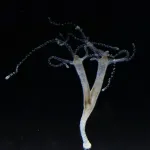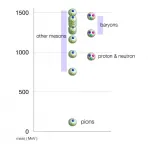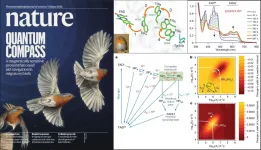(Press-News.org) New research has uncovered a novel trick employed by the bacterium Staphylococcus aureus to thwart the immune response, raising hopes that a vaccine that prevents deadly MRSA infections is a little closer on the horizon.
Immunologists from Trinity College Dublin, working with scientists at GSK - one of the world's largest vaccine manufacturers - discovered the new trick of the troublesome Staphylococcus aureus, which is the causative agent of the infamous "superbug" MRSA.
They found that the bacterium interferes with the host immune response by causing toxic effects on white blood cells, which prevents them from engaging in their infection-fighting jobs.
Importantly, the study also showed in a pre-clinical model system that the toxicity could be lessened following vaccination with a mutated version of a protein specifically engineered to throw a spanner in the MRSA works. Ultimately, this suggests a vaccine could one day do the same thing in people.
The research was recently published in journal, mBio.
MRSA - a global killer
An estimated 700,000 deaths occur annually due to infections against which antibiotics are no longer effective. If this is allowed to continue, modern medicine as we know it will cease to exist; a common childhood infection or routine surgical procedure could become fatal, with the threat of AMR infection likened to that of climate change in some circles.
Immediate and significant action is required to turn the tide of AMR and the development of novel vaccines to prevent these types of infection in the first place, are an attractive and potentially very effective option.
Rachel McLoughlin, Professor in Immunology in Trinity's School of Biochemistry and Immunology and the Trinity Biomedical Sciences Institute (TBSI), said:
"As a society we are witnessing first-hand the powerful impact that vaccination can have on curbing the spread of infection. However, on the backdrop of the COVID-19 epidemic we must not lose sight of the fact that we are also waging war on a more subtle epidemic of antimicrobial resistant infection, which is potentially equally deadly."
"In this study we have identified a mechanism by which a protein made by the bacterium - known as Staphylococcal Protein A (SpA) - attacks and rapidly kills white blood cells. This protein has been widely studied for its immune evasion capacity and has a well-documented role in rendering antibodies raised against the bacterium non-functional.
"Here we uncover a previously undocumented strategy by which SpA forms immune complexes through its interaction with host antibodies, that in turn exert toxic effects on multiple white blood cell types. This discovery highlights how important it will be for effective vaccines to be capable of disarming the effects of protein A."
Dr Fabio Bagnoli, Director, Research & Development Project Leader, GSK, said:
"Our collaboration with Trinity College Dublin and in particular with Professor Rachel McLoughlin, a worldwide recognised expert on staphylococcal immunology, is critical for increasing our knowledge on protective mechanisms against S. aureus."
The study documents the latest discovery made by this group at Trinity under an ongoing research agreement with GSK Vaccines (Siena, Italy) in which PhD students from Trinity have the unique opportunity to obtain training in applied vaccine research at the world's largest vaccine research company, thus equipping them with the skills to pursue world class discovery research in both academia and industrial settings.
Overall, this collaboration aims to increase understanding of the immunology of Staphylococcus aureus infection to advance development of next-generation vaccines to prevent MRSA infections.
INFORMATION:
Notes to Editor
About Staphylococcus aureus and antibiotic resistance
The bacterium Staphylococcus aureus is a major cause of healthcare-associated infections, and bloodstream infections caused by this bacterium is associated with significant mortality.
Resistance in Staphylococcus aureus to the main antibiotic used for treatment, methicillin, was first reported in the 1960s and, over the past decades, antibiotic-resistant Staphylococcus aureus, or MRSA, has become endemic in hospitals throughout the world.
Despite significant efforts by some of the world's largest pharmaceutical giants to develop a vaccine against MRSA, an effective vaccine remains elusive. One of the key challenges in developing an effective vaccine against MRSA has been this bacterium's immense capacity for manipulating and evading the human immune system. The bacterium has evolved a myriad of clever strategies to interfere with even the most sophisticated of our immune defense mechanisms.
Scientists using computer modelling to study SARS-CoV-2, the virus that caused the COVID-19 pandemic, have discovered the virus is most ideally adapted to infect human cells - rather than bat or pangolin cells, again raising questions of its origin.
In a paper published in the Nature journal Scientific Reports, Australian scientists describe how they used high-performance computer modelling of the form of the SARS-CoV-2 virus at the beginning of the pandemic to predict its ability to infect humans and a range of 12 domestic and exotic animals.
Their work aimed to help identify any intermediate animal vector that ...
Although IAT is commonly performed, there is variation in how, why, and where it is done. EULAR aimed to help standardise the way IAT is delivered, and explain to people what they can expect from the treatment. A EULAR taskforce was set up to develop a set of new recommendations to give guidance and advice on best practice for IAT.
The taskforce included doctors, nurses, surgeons, and other health professionals, as well as patients. The taskforce looked at the evidence on IAT. Because there is little published evidence, the taskforce also conducted two surveys ...
Russia is the world's largest forest country. Being home to more than a fifth of forests globally, the country's forests and forestry have enormous potential to contribute to making a global impact in terms of climate mitigation. A new study by IIASA researchers, Russian experts, and other international colleagues have produced new estimates of biomass contained in Russian forests, confirming a substantial increase over the last few decades.
Since the dissolution of the USSR, Russia has been reporting almost no changes in its forests, while data obtained ...
In the animal kingdom, specific growth factors control body axis development. These signalling molecules are produced by a small group of cells at one end of the embryo to be distributed in a graded fashion toward the opposite pole. Through this process, discrete spatial patterns arise that determine the correct formation of the head-foot axis. A research team at the Centre for Organismal Studies (COS) at Heidelberg University recently discovered an enzyme in the freshwater polyp Hydra that critically shapes this process by limiting the activity of certain growth factors.
In particular, the proteins of the so-called Wnt signalling pathway play an important role in the pattern formation of the primary ...
MINNEAPOLIS/ST. PAUL (06/24/2021) -- A study led by researchers at the University of Minnesota Medical School sheds new light on boys' weapon-carrying behaviors at U.S. high schools. The results indicate that weapon-carrying is not tied to students' race or ethnicity but rather their schools' social climates.
The study was published in the journal Pediatrics and led by Patricia Jewett, PhD, a researcher in the Department of Medicine at the U of M Medical School.
"Narratives of violence in the U.S. have been distorted by racist stereotyping, portraying male individuals of color as more dangerous than white males," Jewett said. "Instead, our study suggests that school climates may be linked to an increase in weapon-carrying at schools."
The ...
Researchers at UCSF have found that extreme caloric restriction diets alter the microbiome in ways that could help with weight loss but might also result in an increased population of Clostridiodes difficile, a pathogenic bacterium that can lead to severe diarrhea and colitis.
Such diets, which allow people only 800 calories per day in liquid form, are an effective approach to weight loss in people with obesity. The unexpected results of this study raise the question of how much the microbiome influences weight loss and which bacteria are significant in that process. The study appears in the June 23, 2021, issue of Nature.
"Our results underscore that the role of calories in weight ...
Using only a pen and paper, a theoretical physicist has proved a decades-old claim that a strong force called Quantum Chromo Dynamics (QCD) leads to light-weight pions, reports a new study published on June 23 in Physical Review Letters.
The strong force is responsible for many things in our Universe, from making the Sun shine, to keeping quarks inside protons. This is important because it makes sure that the protons and neutrons bind to form nuclei of every atom that exists. But there is still a lot of mystery surrounding the strong force. Einstein's relation E=mc2 means a strong force leads to more energy, and more energy means a heavier mass. But subatomic particles called pions ...
Recently, a collaboration of researchers from the Hefei Institutes of Physical Science (HFIPS), Universities of Oldenburg (Germany) and Oxford (UK) have been gathering evidence suggesting that a specific light-sensitive protein in the eye named cryptochrome 4 is sensitive to magnetic fields and plays essential roles in magnetic sensing in migratory birds such as European robins. The results have been published in Nature (https://doi.org/10.1038/s41586-021-03618-9) on June 23 and selected as the cover paper.
For the first time, first author XU Jingjing, a doctoral student in Mouritsen's research group at Oldenburg, with the help of XIE's group, produced cryptochrome 4 in night-migratory ...
BIRMINGHAM, Ala. - A bout with flu virus can be hard, but when Streptococcus pneumonia enters the mix, it can turn deadly.
Now researchers have found a further reason for the severity of this dual infection by identifying a new virulence mechanism for a surface protein on the pneumonia-causing bacteria S. pneumoniae. This insight comes more than three decades after discovery of that surface protein, called pneumococcal surface protein A, or PspA.
This new mechanism had been missed in the past because it facilitates bacterial adherence only to dead or dying lung epithelial cells, not to living cells. Heretofore, researchers typically used healthy lung ...
Ultrasound can overcome some of the detrimental effects of ageing and dementia without the need to cross the blood-brain barrier, Queensland Brain Institute researchers have found.
Professor Jürgen Götz led a multidisciplinary team at QBI's Clem Jones Centre for Ageing Dementia Research who showed low-intensity ultrasound effectively restored cognition without opening the barrier in mice models.
The findings provide a potential new avenue for the non-invasive technology and will help clinicians tailor medical treatments that consider an individual's disease progression and cognitive decline.
"Historically, ...






